Excerpts from Jim Conrad's
Naturalist Newsletter
from the May 31, 2018 Newsletter issued from Rancho Regenesis in the woods ±4kms west of Ek Balam Ruins; elevation ~40m (~130 ft), N~20.876°, W~88.170°; central Yucatán, MÉXICO
YUCATAN BOX TURTLE
Three or four years ago when I lived in Río Lagartos on the Yucatan's northern coast, a herpetologist from the US passed through asking all the village Maya he ran into if they'd seen a Coc Ak. He'd had a postcard-like explanation printed out showing that a Coc Ak was an exceptionally pale box turtle. Below, you can see the front of that card:
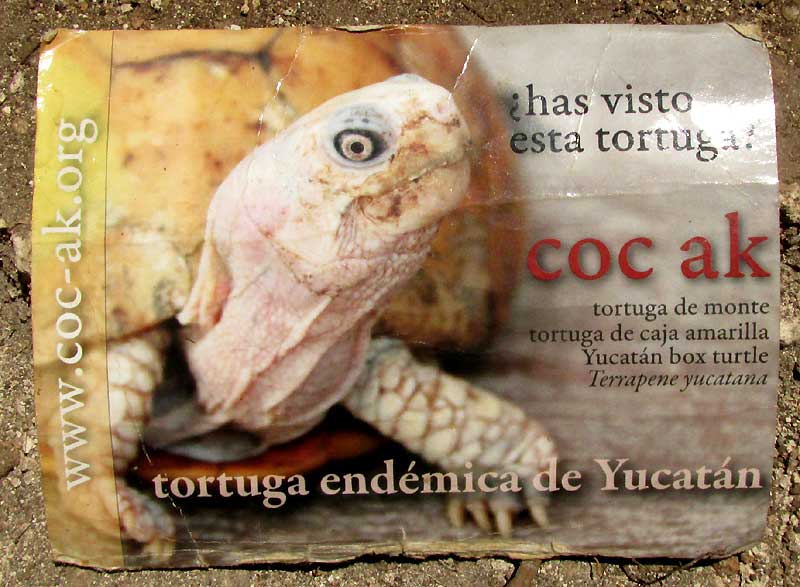
The card's reverse side shows the turtle's top and bottom shells, and heads of the male and female, as seen below:
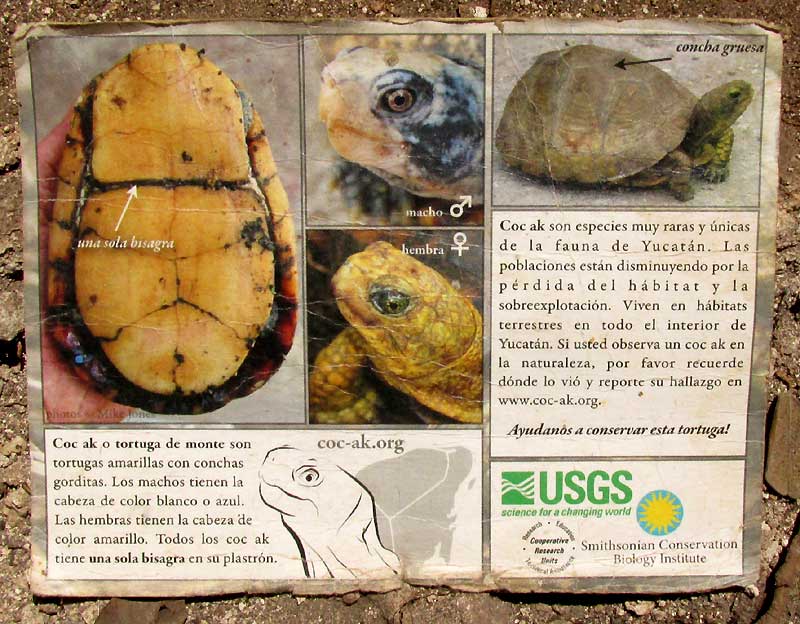
Male heads are white with blue splotches, while those of the female are yellowish. In Spanish the card explains that Coc Ak is a rare species found only in the Yucatan, and that its populations are being reduced because of habitat destruction and "over exploitation." The card isn't clear what kind of over exploitation is taking place, but the researcher told me that traditionally the Maya kept Coc Aks in their backyards because their blood was believed to cure certain serious illnesses. Also, he said that the burning part of Maya slash-and-burn agricultural technology kills and maims the turtles. Juan, a backwoodsy Maya working at the rancho, says that Coc Ak meat is good medicine for coughs.
On the card's reverse side at the bottom, right you can see that the Coc Ak study was being supported by the USGS and the Smithsonian Conservation Biology Institute. On the front page a web address, www.coc-ak.org, was provided where Coc Ak sightings could be reported.
In recent years I've kept the Coc Ak card as a bookmarker, so this week when I passed by the rancho's pond and a pale box turtle like the one on the card was trying to get out, I knew I had a Coc Ak. The rancho owner had wanted the concrete-lined pond to serve as a wildlife drinking source, and many birds use it as such, but it has vertical sides over which land turtles fall, and usually drown. I got this one out just in time. Below, you can see her drying out
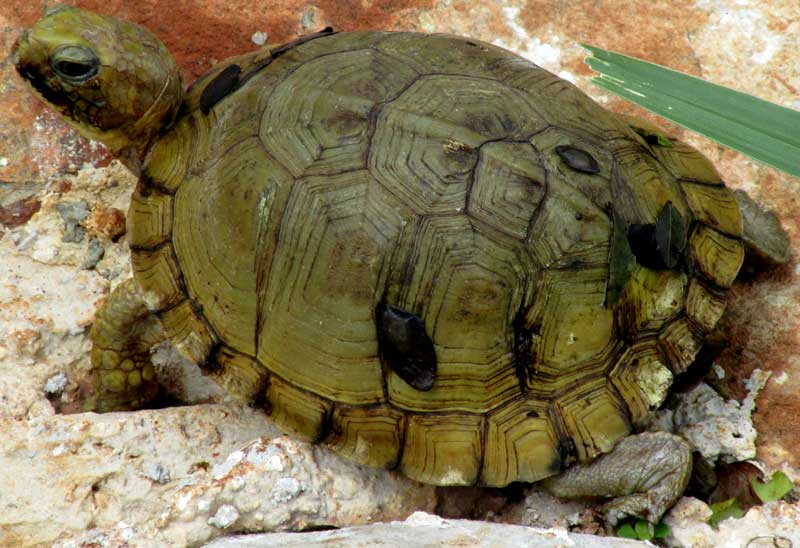
A close-up of the yellowish head is shown below:
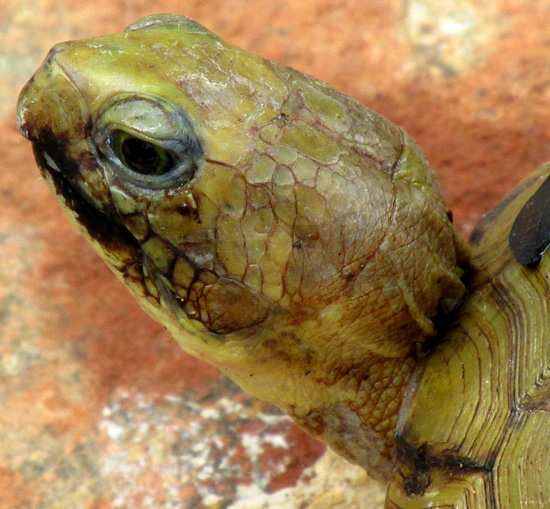
And a look at the bottom shell, the plastron, is provided below:
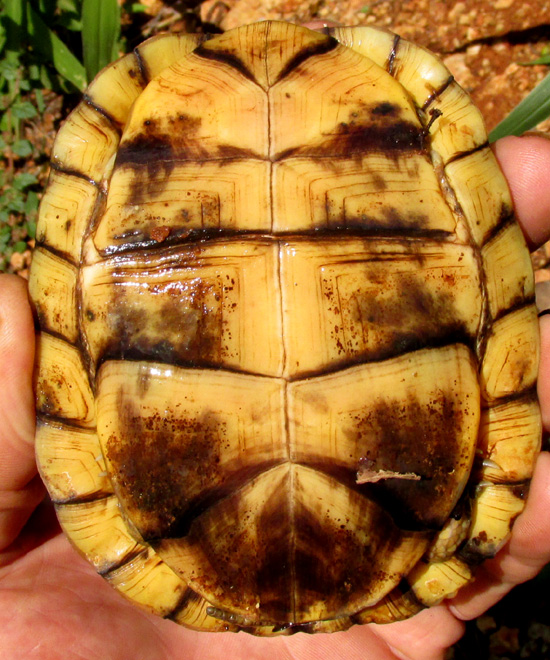
The www.coc-ak.org website when I tried to access it wasn't functional, so maybe the study has ended. Though the researcher referred to Coc Ak as a distinct species, other authorities on the Internet tend to regard it as a subspecies of the eastern US's box turtle. You can see how similar our Coc Ak is to the box turtles we often saw in Mississippi at www.backyardnature.net/n/a/box-turt.htm
Our Coc Ak, considered as a subspecies of eastern North America's box turtle, is TERRAPENE CAROLINA ssp. YUCATANA, known in English as the Yucatan Box Turtle. Seven subspecies of box turtles are recognized, one of which is extinct. The various subspecies are listed and much more information on box turtles in general is provided on Wikipedia's Box Turtle page.
Yucatan Box Turtles are the southernmost box turtle subspecies, and isolated by a considerable distance from the others.
The owner is planning to install some kind of ramp for the turtles to get out of the pond. Meanwhile, I carried the one in the pictures to my garden, where I hope she'll stay. All box turtles are omnivores. Among their foods available here are slugs, snails, cockroaches and crickets, as well as certain types of grass, fruits, berries, and mushrooms.